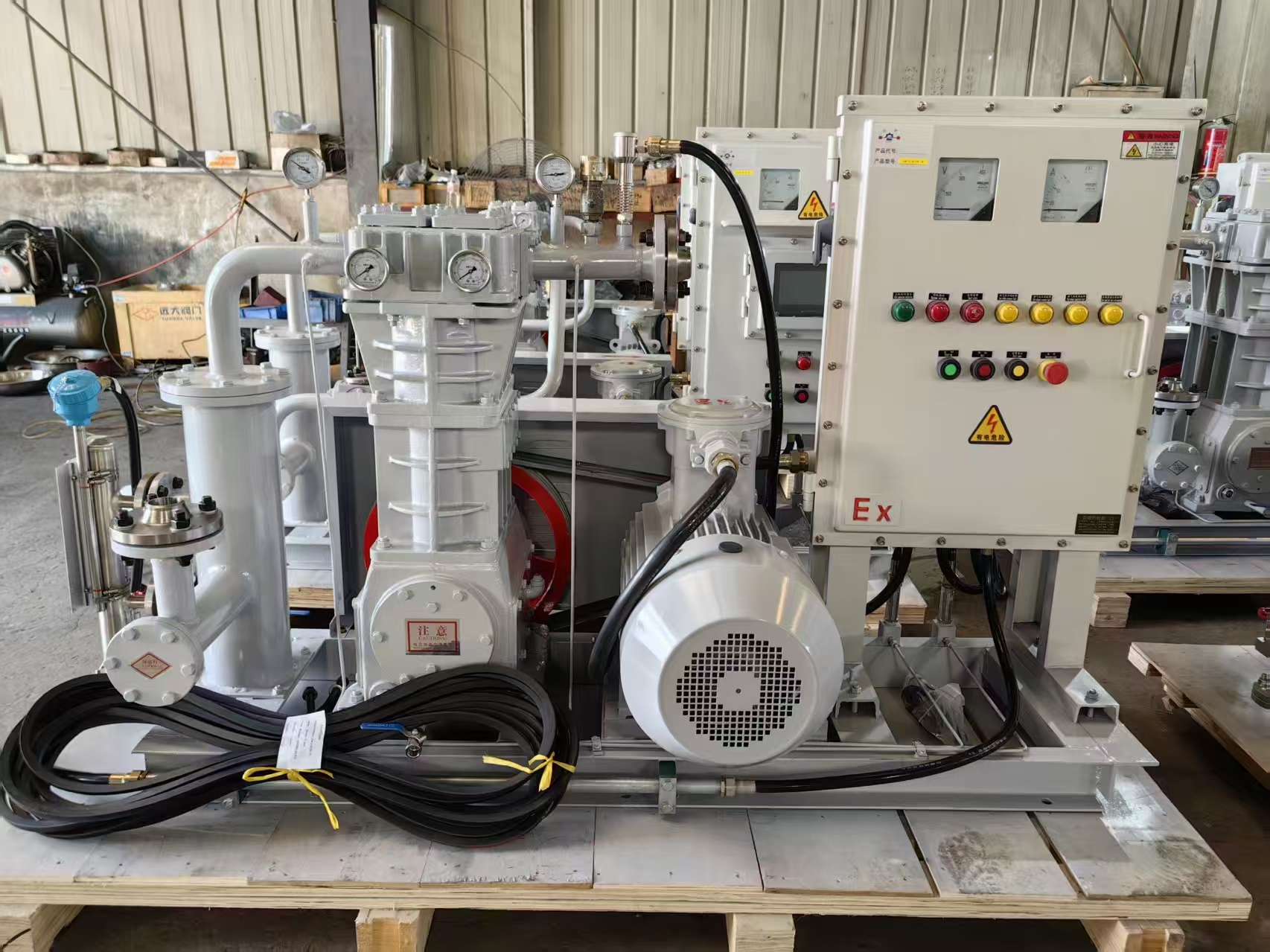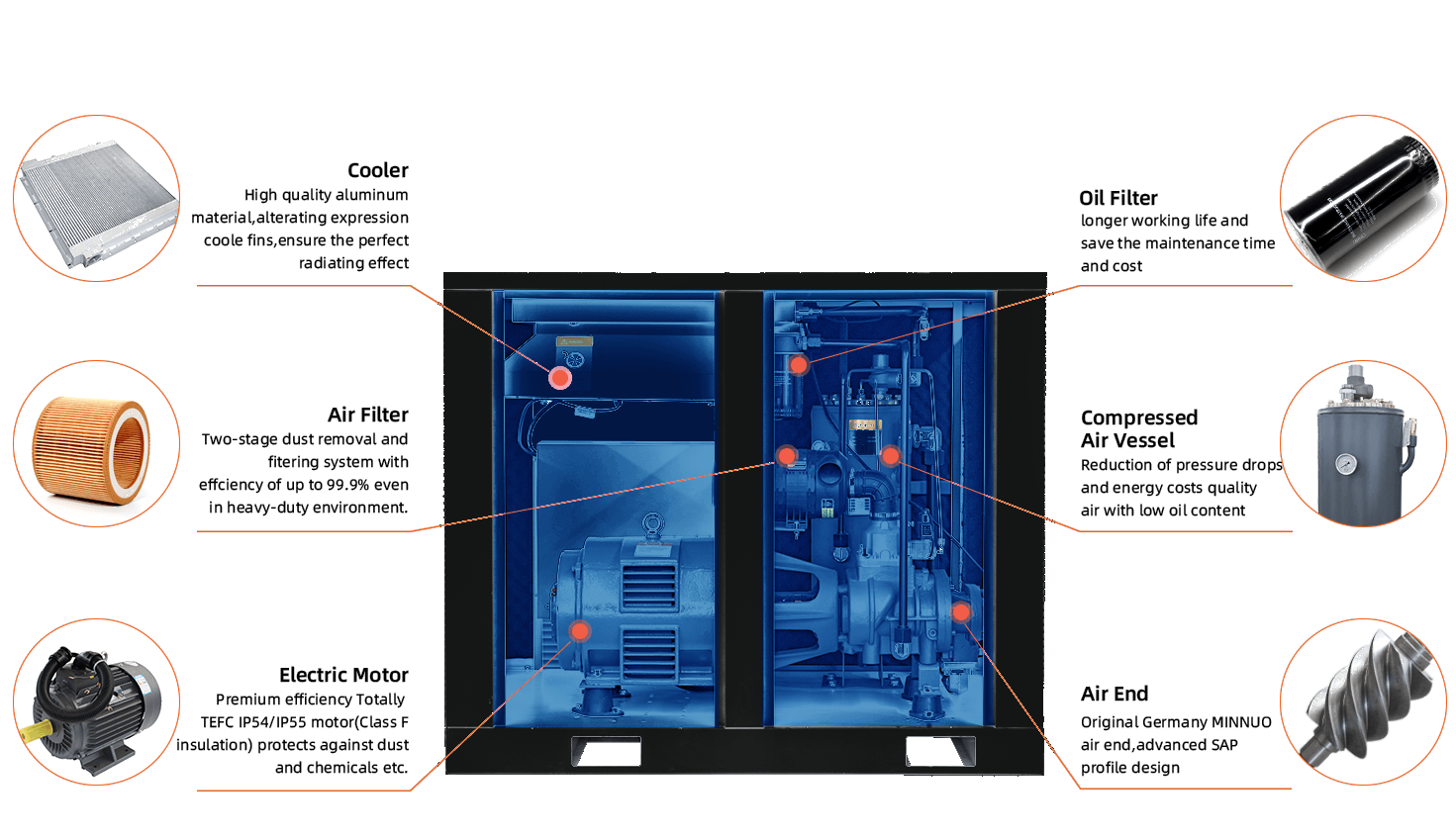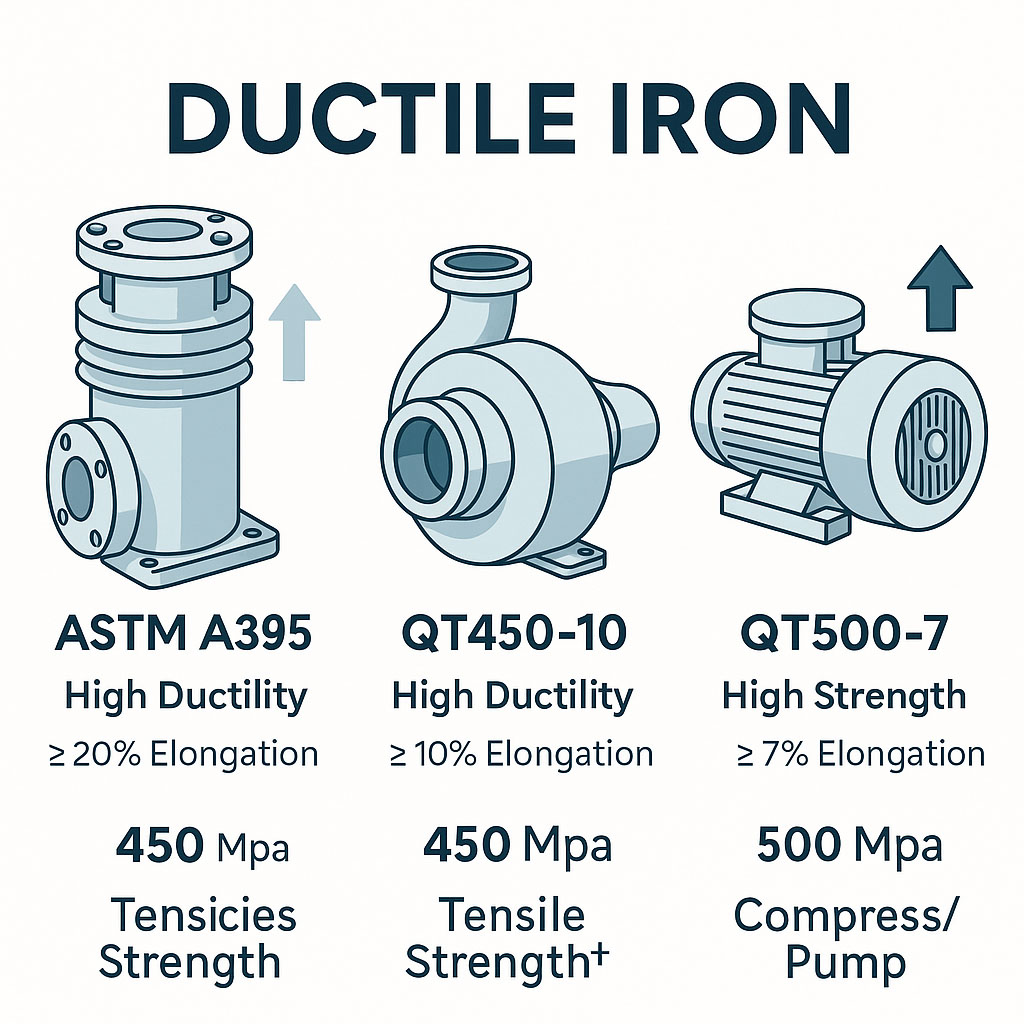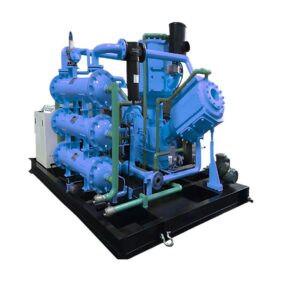A compressore d'aria a gas converte l'energia meccanica in gas compresso che alimenta gli utensili, riempie le bombole o alimenta le linee di produzione. Sebbene le unità ad aria dominino le officine, i modelli per il trattamento del gas affrontano il recupero di CO₂, il rifornimento domestico di GNC e il rifornimento di idrogeno. Questa guida spiega il ciclo di lavoro, i componenti principali e come scegliere tra un'unità di trattamento aria e un'unità di trattamento gas. compressore a gas alternativo e un design a vite.
1️⃣ Nozioni di base sulla compressione - Dall'ingresso allo scarico
-
Corsa di ingresso - La valvola di aspirazione si apre e il gas a bassa pressione entra nel cilindro o nella camera del rotore.
-
Compressione - Il pistone sale (o i rotori si ingranano), riducendo il volume, aumentando la pressione e aumentando la temperatura.
-
Scarico - Una volta raggiunta la pressione target, la valvola di uscita si apre, rilasciando il gas compresso nello stoccaggio o nelle tubazioni a valle.
Le varianti prive di olio mantengono il lubrificante fuori dal percorso del gas, essenziale per le installazioni di CO₂ per uso alimentare e CNG domestico.
2️⃣ Spiegazione dei componenti chiave
| Parte | Funzione |
|---|---|
| Cilindro o rotori | Camera di compressione primaria |
| Valvole o slitte | Controllo della temporizzazione di ingresso/scarico |
| Intercooler / aftercooler | Togliere il calore tra una fase e l'altra |
| Separatore | Elimina l'olio o la condensa (se lubrificato) |
| Valvole di sicurezza | Protezione dalla sovrapressione |
Parole di transizione come inoltre, quindi, e nel frattempo guidano l'utente attraverso ogni sistema in un flusso logico, aumentando la leggibilità.
3️⃣ Compressore alternativo o a vite: quale si adatta al vostro gas?
| Fattore | Compressore a gas alternativo | Compressore a vite |
|---|---|---|
| Capacità di pressione (>30 bar) | Eccellente | Limitato* |
| Stabilità della portata | Pulsante | Fermo |
| Intervalli di manutenzione | Maggiore durata dei componenti | Meno tempi di inattività |
| Ingombro / rumore | Più grande, più rumoroso | Compatto, silenzioso |
*I rotori a iniezione d'olio di solito raggiungono un massimo di 25 bar senza un booster.
Pertanto, l'imbottigliamento di CO₂ ad alta pressione o il GNC per autotrazione preferiscono i pistoni, mentre le linee di aggiornamento del biogas a bassa pressione si orientano verso le viti.
4️⃣ Istantanee dell'applicazione
-
Compressore di gas CO₂ - Gli impianti di produzione di bevande recuperano il CO₂ di fermentazione, quindi lo comprimono a 30 bar per la liquefazione. Un pistone a due stadi senza olio garantisce la sicurezza alimentare.
-
Compressore di gas CNG Home - Le unità di rifornimento domestico portano il gas di rete da 8 bar a 200 bar durante la notte. I gruppi alternativi compatti con essiccatori incorporati funzionano in garage.
-
La cattura del gas di torcia offshore sposa un precompressore a vite con un booster alternativo, fondendo entrambe le tecnologie per un'efficienza ottimale.
5️⃣ Consigli per l'efficienza e la sicurezza
-
Monitoraggio dell'aumento di temperaturaOgni 10 °C di taglio prolunga la vita della valvola.
-
Utilizzare intercooler tra gli stadi; nel frattempo i rapporti di pressione rimangono equilibrati.
-
Installare scarichi a perdita zero per ridurre gli scarti di spurgo.
-
Programmare i controlli delle perdite trimestrale; il gas compresso è costoso.
-
Selezionare motori antideflagranti durante la manipolazione degli idrocarburi.
Di conseguenza, i costi energetici diminuiscono, i tempi di attività aumentano e gli operatori soddisfano gli obiettivi di pulizia ISO 8573.
Lista di controllo finale
-
Confermare innanzitutto la pressione e la portata; dimensionare il sistema compressore d'aria a gas di conseguenza.
-
Confronto compressore alternativo vs. compressore a vite vantaggi rispetto al ciclo di lavoro.
-
Scegliete la costruzione senza olio per Compressore di gas CO₂ o gas medicali.
-
Verificare la conformità al codice per qualsiasi Compressore gas CNG casa installazione.
-
Pianificate la manutenzione preventiva: piccole riparazioni oggi prevengono grandi guasti domani.
Avete bisogno di aiuto per scegliere la soluzione migliore?
Keepwin Technology offre unità a pistone, a vite e a membrana da 3 bar a 450 bar per ogni tipo di gas.











